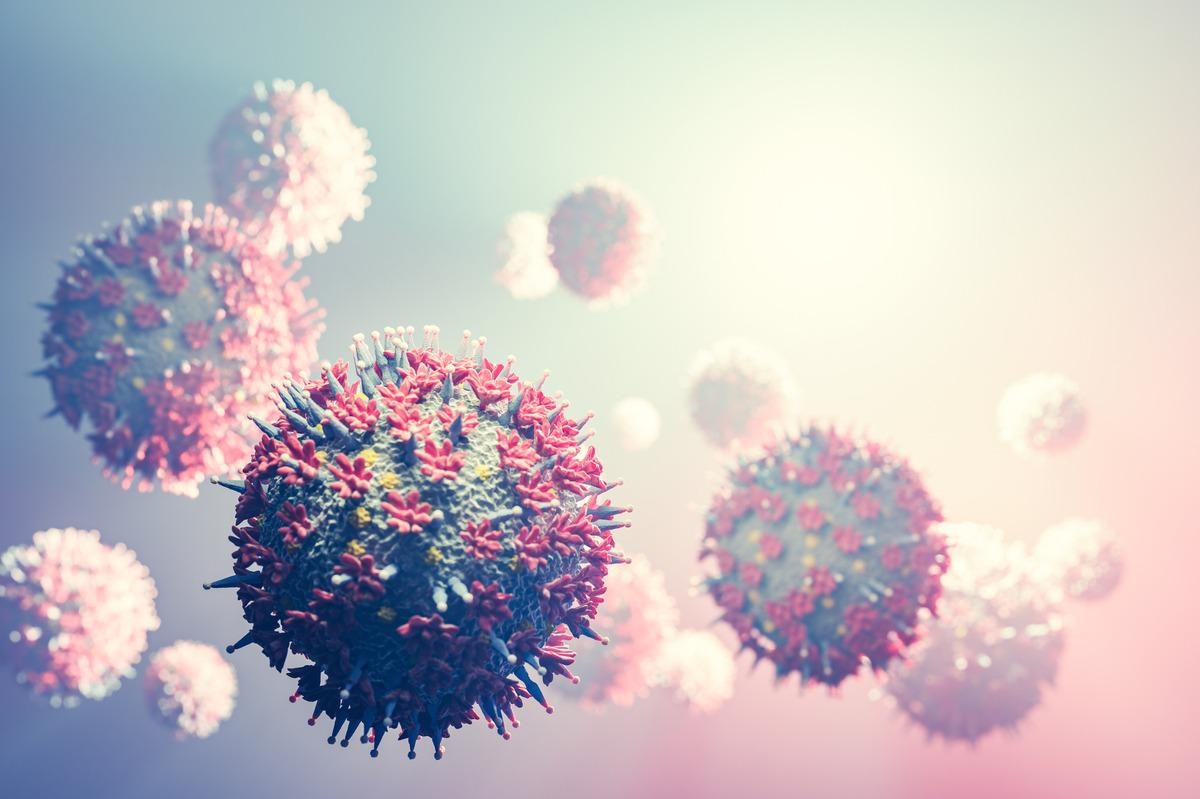A recent study posted to the bioRxiv* preprint server outlined the antibody evasion capacity of the prevalent severe acute respiratory syndrome coronavirus 2 (SARS-CoV-2) Omicron sublineages.
 Study: Vascular inflammation exposes perivascular cells to SARS-CoV-2 infection. Image Credit: PHOTOCREO Michal Bednarek/Shutterstock
Study: Vascular inflammation exposes perivascular cells to SARS-CoV-2 infection. Image Credit: PHOTOCREO Michal Bednarek/Shutterstock

 *Important notice: bioRxiv publishes preliminary scientific reports that are not peer-reviewed and, therefore, should not be regarded as conclusive, guide clinical practice/health-related behavior, or treated as established information.
*Important notice: bioRxiv publishes preliminary scientific reports that are not peer-reviewed and, therefore, should not be regarded as conclusive, guide clinical practice/health-related behavior, or treated as established information.
Background
Coronavirus disease 2019 (COVID-19) therapy and protection are based on antibodies that neutralize SARS-CoV-2. As a result, SARS-CoV-2 variants exhibiting antibody evasion place vital preventive and therapeutic approaches to COVID-19 in jeopardy.
The neutralization susceptibility of the SARS-CoV-2 Omicron BA.1 sublineage following COVID-19 or its vaccination is poor due to the significant number of mutations in the spike (S) protein of the Omicron variant of concern (VOC). Hence, Omicron infections lead to diminished vaccination efficacy and a superior re-infection rate than the other SARS-CoV-2 variants.
Notably, the newly emerged Omicron sublineages, namely BA.2 and BA.1.1, have rapidly become the predominant circulating SARS-CoV-2 variants.
About the study
In the present study, the scientists determined polyclonal serum activity against the SARS-CoV-2 Omicron BA.2, BA.1, and BA.1.1 sublineages in 50 COVID-19 vaccinated or convalescent individuals. The authors also delineated antibody sensitivities of the SARS-CoV-2 variants at a monoclonal level employing 163 antibodies.
All study volunteers submitted written informed consent before enrollment. A total of 20 serum samples from COVID-19 recovered patients were procured from the University Hospital Cologne between April and May 2020.
People with a history of polymerase chain reaction (PCR)-confirmed COVID-19 were enrolled for the present research within eight weeks of SARS-CoV-2 diagnosis or symptom onset and were followed up longitudinally to assess long-lasting immunity to the virus. The individuals were probably infected by the ancestral SARS-CoV-2 Wu01-like strains.
Further, 30 serum samples from SARS-CoV-2 vaccinated health care workers were collected. Health-care personnel who were COVID-19 vaccinated at the Charité – Universitätsmedizin in Berlin, Germany, were included in this study regardless of their health conditions.
All serum samples were screened for antibodies against the SARS-CoV-2 nucleocapsid (N) protein using the SeraSpot immunoassay based on the anti-SARS-CoV-2 immunoglobulin G (IgG) microarray.
The vaccination cohort did not include samples from people with prior SARS-CoV-2 infection, a SARS-CoV-2-positive nucleic acid amplification test, or detectable anti-N antibodies. In addition, both infection and vaccination groups were vaccinated with the COVID-19 messenger ribonucleic acid (mRNA) BNT162b2 vaccine following a median of nine and 14 months after two BNT162b2 doses and SARS-CoV-2 infection, respectively.
The serum samples were procured following centrifugation and kept at -80°C until analysis. The neutralizing capacity of the serum samples against the three Omicron sublineages was analyzed using lentivirus-based pseudovirus experiments. The ancestral SARS-CoV-2 Wu01 strain was used as a reference.
Results and discussions
The study results illustrated that the SARS-CoV-2 recovered individuals had a median age of 51 years and experienced asymptomatic or mild COVID-19. All serum samples procured from COVID-19 convalescents after a median of 48 days demonstrated 100% neutralization of the SARS-CoV-2 Wu01 strain. On the contrary, serum activity against the three Omicron sublineages was substantially low at just 50%, 0%, and 15% for the BA.2, BA.1.1, and BA.1 sublineages, respectively. Nonetheless, the COVID-19 booster vaccination at a median of 33 days in all SARS-CoV-2 recovered patients hiked the neutralizing activity of Omicron.
In the vaccination cohort, the Wu01 and Omicron sublineages’ neutralizing capacity was detected in all 30 subjects and 43 to 73% of subjects, respectively, at a median of 28 days after the two-dose vaccination. Further, at a median of 29 days following boosting, the samples exhibited eight-time heightened serological activity against the Wu01 strain and significantly elevated neutralizing activity against Omicron.
Notably, most Wu01-neutralizing antibodies lost activity against the Omicron sublineages. While the majority of BA.1-neutralizing antibodies were also active against BA.2 and BA.1.1, such as R568-1G9 and R207-2F11, a subgroup of antibodies with Omicron-neutralizing activity specific to BA.2 implies sublineage antigenicity distinctions.
Furthermore, the greater incidence of BA.2-neutralizing antibodies versus BA.1-neutralizing antibodies among the analyzed antibodies indicates that the BA.2 S protein has fewer characteristics linked with resistance.
The majority of the assessed 18 monoclonal antibodies (mAbs) under development or in clinical use neutralized the SARS-COV-2 Wu01 strain. However, a less potent effect against Wu01 was observed with sotrovimab. On the other hand, most mAbs in clinical use or under development were resistant to the prevalent Omicron BA.2, BA.1.1, and BA.1 sublineages. However, Omicron sensitivity to these antibodies might greatly vary at a sublineage level.
For instance, while the DZIF-10c mAb neutralized the Omicron BA.1 sublineage, it was not active against the BA.1.1 sublineage. Cilgavimab had significant neutralizing activity against BA.2 comparable to the Wu01 neutralizing levels and was >800-time superior to BA.1.1 and BA.1. Of all the analyzed mAbs, bebtelovimab exhibited robust neutralizing capacity against the three Omicron sublineages. Thus, sublineage identification or epidemiology should be considered when choosing mAbs for the treatment or prophylaxis of Omicron infections.
Conclusions
The study findings revealed a considerable but similar decline of serological immunity of the SARS-CoV-2 vaccinees or virus-infected individuals against the three Omicron sublineages, which notably hiked following COVID-19 booster vaccination. Nevertheless, significant variances in sensitivity to different antibodies by the Omicron BA.2 and BA.1 sublineages reveal their unique escape patterns that impact the clinical usage of antibodies. The present study findings have significant implications for SARS-CoV-2 vaccination approaches and antibodies used in COVID-19 therapy and prevention.

 *Important notice: bioRxiv publishes preliminary scientific reports that are not peer-reviewed and, therefore, should not be regarded as conclusive, guide clinical practice/health-related behavior, or treated as established information.
*Important notice: bioRxiv publishes preliminary scientific reports that are not peer-reviewed and, therefore, should not be regarded as conclusive, guide clinical practice/health-related behavior, or treated as established information.